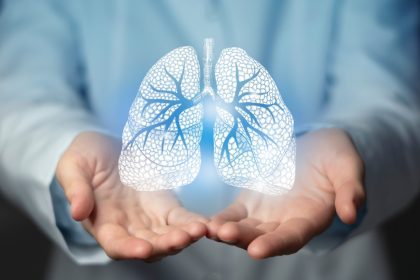Work fuels livelihoods, but certain jobs expose lungs to unseen threats, eroding respiratory health with every shift. Dust, chemicals, and fumes, common in specific trades, irritate airways, spark inflammation, and scar delicate tissues. Four occupations—construction, manufacturing, cleaning, and mining—stand out for their harsh toll on breathing. These roles, vital to economies, carry risks that build over weeks or years, from coughs to chronic conditions. Below, we explore these hazards, numbered for clarity, their impact, and ways to protect lung health.
1. Construction: Dust clouds choke airways
Construction sites hum with activity, but they’re also breeding grounds for lung-damaging dust. Sawing wood, grinding concrete, or demolishing walls releases silica and asbestos particles, tiny enough to slip deep into lungs. Over weeks, these irritants inflame airways, causing wheezing or shortness of breath. Long-term exposure may harden lung tissue, a condition called silicosis, stealing air capacity.
Sites rarely stay clean—wind stirs debris, and tight schedules skip sweeps. Masks, like N95s costing $2 each, block most particles, but heat tempts workers to skip them. Ventilation fans, $50 at hardware stores, clear air when bosses invest. Daily habits, like shaking out clothes post-shift, cut dust carried home. For those swinging hammers, shielding lungs now keeps breaths steady later.
2. Manufacturing: Fumes erode lung defenses
Factories, churning out goods from cars to textiles, fill air with chemical fumes. Welding torches release metal vapors, while paints and solvents emit volatile organic compounds (VOCs). These toxins irritate lung linings, sparking coughs or tightness in weeks. Years of inhaling fumes may weaken cilia—tiny hairs clearing mucus—raising risks of bronchitis or worse, like asthma flares.
Poorly vented plants trap haze, and budget cuts skimp on exhaust systems. Respirators, $30 for reusable models, filter fumes if fitted right, though upkeep’s key. Breaks outdoors, even five minutes, flush lungs with cleaner air. Wet mopping floors, a $10 bucket job, traps dust over dry sweeps. For factory workers, dodging fumes daily preserves the breath that powers their grind.
3. Cleaning: Sprays sting delicate tissues
Cleaning, from offices to hospitals, leans on sprays and powders that harm lungs. Ammonia in glass cleaners and bleach in disinfectants release vapors, burning airways with each spritz. Frequent use—common in tight-knit crews—triggers wheezing or chest pain in weeks. Chronic exposure may narrow airways, mimicking asthma, especially in poorly aired rooms.
Ventilation lags in old buildings, and gloves alone don’t block inhaled mist. Switching to vinegar-based cleaners, $3 a gallon, cuts toxins without losing shine. Masks, like cloth ones at $5, catch spray droplets, though fit matters. Opening windows during shifts, where possible, dilutes fumes fast. For those scrubbing floors, swapping harsh chemicals keeps lungs open, easing every inhale.
4. Mining: Grit scars deep breathing
Mining, whether coal, metal, or stone, buries lungs in dust. Underground tunnels trap silica and coal particles, which lodge in airways, inflaming tissue. Short-term coughs, common in weeks, may fade, but years of grit build scars, a condition called pneumoconiosis, choking breath. Diesel exhaust from drills adds cancer-linked toxins, hitting smokers hardest.
Ventilation shafts help, but breakdowns are frequent, and rural sites lag on tech. High-grade respirators, $40 with filters, block fine dust, though sweat tests patience. Water sprays, rigged to drills for $100, dampen clouds before they rise. Rinsing skin post-shift, a bucket ritual, stops grit from lingering. For miners carving earth, guarding lungs today means air for tomorrow.
Why lungs bear the brunt
Lungs, vast but fragile, filter 11,000 liters of air daily, catching whatever work throws—dust, vapors, sprays. These invaders inflame bronchi, scar alveoli, or clog mucus, slowing oxygen flow. Jobs amplify exposure—eight-hour shifts, five days weekly, pile harm fast. Age and habits, like vaping, weaken defenses, while poor ventilation or lax safety rules let toxins linger. Urban smog or rural pollen adds to the load, making work’s air a quiet threat.
Challenges and solutions
Protection faces hurdles. Masks fog in heat, but anti-fog wipes, $5 a pack, keep vision clear. Respirators cost more—$50 yearly for filters—but bulk buys online trim bills. Ventilation upgrades need owner buy-in; portable fans, $20, move air in a pinch. Time’s tight—cleaning gear or rinsing cuts breaks—but stashing wipes in toolkits streamlines care. Rural jobs lack supply stores, yet mail-order masks deliver fast. These fixes, small but steady, tilt odds toward clearer lungs.
Steps to breathe easier
Start simple—one mask daily, swapped weekly, blocks most grit. Ventilate workspaces with $15 box fans, aimed at open doors. Swap one bleach spray for vinegar, testing on small jobs. Rinse hands and face post-shift, using $3 soap bars. Track coughs in a free app, noting triggers like dusty days. Community clinics, often $20 a visit, catch early wheezes. Worksite safety talks, sometimes free via unions, share hacks like wet drilling. These habits, folded into shifts, shield lungs without slowing paychecks.
A breath worth saving
The four jobs—construction, manufacturing, cleaning, mining—grind lungs with dust and fumes, risking health in weeks. Each particle dodged, each vent opened, buys time for airways. Masks, sprays, or fans—$5 to $50—aren’t luxuries but lifelines, affordable on tight budgets. Work’s pace won’t ease, but cleaner air can, from shop floors to tunnels. Lungs, silent workhorses, deserve defense, proving small moves outlast years of toxic breaths.

















